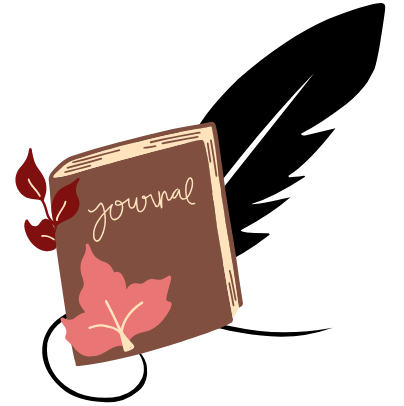As a writer, I’ve often found myself staring at a blank page, the cursor blinking mockingly as I struggle to find that perfect opening line. It’s a familiar scenario for many of us, isn’t it?
That’s where creative writing prompts come in – they’re like a literary jumpstart for our imaginations.
The Importance of Prompts
Writing prompts are carefully crafted catalysts designed to ignite your creativity and push you out of your comfort zone. They act as keys that unlock doors in your mind you didn’t even know existed.
Research in cognitive psychology has shown that constraints, like those provided by prompts, can actually enhance creativity. By limiting our options, we force our brains to think more innovatively within those boundaries.
This phenomenon, known as “creative limitation,” is why even seasoned writers find value in using prompts.
A 2017 study published in the Creativity Research Journal found that using specific prompts can enhance creative output compared to open-ended tasks. Having a springboard launches you into unexplored territories of your imagination.
From Ancient Rhetoric to Modern Practice
The concept of writing prompts dates back to ancient rhetorical exercises used in Greek and Roman education. In the 1920s, surrealist artists developed “automatic writing” techniques – precursors to modern freewriting prompts.
Today, writing prompts have evolved into a diverse array of tools used by writers, educators, and even therapists.
The U.S. Department of Education’s National Writing Project, founded in 1974, has extensively researched and promoted the use of writing prompts in education, recognizing their power to develop critical thinking and creative expression skills.
Types of Writing Prompts
Writing prompts come in all shapes and sizes, each designed to target different aspects of the writing process. Let’s explore some of the most effective types:
Single Word Prompts
Sometimes, all it takes is one word to set your mind racing. Single word prompts challenge you to build an entire story or scene around a simple concept. For example, the word “echo” might inspire a tale about a lonely cave explorer or a metaphorical piece about the lasting impact of our actions.
Here are some examples of single word prompts:
- Whisper
- Maze
- Metamorphosis
- Serendipity
- Ephemeral
When using single word prompts, let your mind wander and explore all the possible associations and meanings connected to that word. You might be surprised at the diverse range of ideas that can stem from just one word.
Visual Prompts
Visual prompts can be photographs, paintings, or even abstract art. They tap into our visual processing centers, often evoking emotions and memories that can translate beautifully into written words.
When using visual prompts, consider the following aspects:
- Colors and their emotional impact
- Composition and focal points
- Textures and patterns
- The story behind the image
- Your personal emotional response
For example, a photograph of an abandoned amusement park might inspire a story about lost childhood innocence, a post-apocalyptic tale, or a mystery surrounding the park’s closure.
Scenario Prompts
These prompts present a specific situation or “what if” scenario. For instance, “Write about what happens when sleep is no longer necessary” immediately sets your mind working on the implications and possibilities of such a reality.
Other examples of scenario prompts include:
- You wake up one morning to find everyone in the world has disappeared except you.
- A door appears in your bedroom that wasn’t there before.
Where does it lead?
- You find out about you can talk with plants.
What secrets do they reveal?
- Time starts moving backwards.
How does society adapt?
- Gravity suddenly becomes inconsistent and unpredictable.
Describe a day in this new world.
Scenario prompts challenge you to think creatively about cause and effect, world-building, and character reactions to unusual circumstances.
Character-Based Prompts
Focused on creating or exploring characters, these prompts might ask you to write from the perspective of someone with an unusual profession or to describe a character’s deepest fear.
Examples of character-based prompts:
- Write a day in the life of a professional cloud watcher.
- Describe a character’s most prized possession and why it means so much to them.
- Create a character who has a unique superpower that’s more of a curse than a blessing.
- Write a monologue from the perspective of a 500-year-old tree.
- Develop a character who can only speak in questions.
How do they navigate daily life?
Character-based prompts help you develop more complex, nuanced characters and can often lead to larger story ideas.
First Line Prompts
Sometimes, all you need is a strong opening line to get the ball rolling. These prompts provide that first sentence, challenging you to continue the story from there.
Here are some examples of first line prompts:
- “The last thing I expected to find in my grandmother’s attic was a portal to another dimension.”
- “It wasn’t until the third time I died that I realized something was wrong.”
- “The day the colors disappeared, everyone panicked except for the blind.”
- “She always wore gloves, but today, she forgot.”
- “The letter arrived 50 years too late, but it’s contents would change everything.”
First line prompts can be particularly helpful when you’re struggling with how to begin a story. They provide an immediate hook and set a tone that you can build upon.
Implementing Prompts in Your Writing Practice
Now that we understand the types of prompts, let’s look at how to effectively incorporate them into your writing routine.
Step 1: Choose Your Prompt
Select a prompt that resonates with you or challenges you in an interesting way. Don’t overthink it – sometimes the prompts that seem the most bizarre can lead to the most creative outcomes.
When choosing a prompt, consider:
- Your current mood and energy level
- Any themes or ideas you’ve been wanting to explore
- The genre you’re most comfortable with (or want to challenge yourself in)
- The amount of time you have available for writing
Remember, there’s no “wrong” choice when it comes to prompts. The goal is to get you writing, so pick whatever sparks your interest in the moment.
Step 2: Set a Time Limit
Giving yourself a time constraint (say, 15 minutes) can help prevent overthinking and encourage spontaneity in your writing. Time limits serve several purposes:
- They create a sense of urgency, pushing you to write without self-censoring
- They help you focus and avoid distractions
- They make the task feel more manageable, especially if you’re short on time
- They can increase your writing speed and fluency over time
You can start with shorter time limits (5-10 minutes) and gradually increase them as you become more comfortable with the process.
Step 3: Write Without Judgment
The key here is to silence your inner critic. Write freely, without worrying about grammar, structure, or even making sense.
The goal is to get ideas flowing.
To help silence your inner critic:
- Remind yourself that this is a draft and no one else will see it unless you choose to share
- Focus on quantity over quality – aim to fill the page
- If you get stuck, keep your pen moving or your fingers typing, even if you’re just repeating words
- Embrace the weird, wild, and unexpected ideas that come up
- Resist the urge to edit as you go
Remember, the purpose of this exercise is exploration and idea generation, not perfection.
Step 4: Reflect and Refine
After your initial writing session, take a step back. What themes or ideas emerged?
Is there potential for a larger piece?
During your reflection, consider:
- What surprised you about what you wrote?
- Which parts felt most energizing or exciting to write?
- Are there any characters or settings you’d like to explore further?
- Did any particular phrases or images stand out to you?
- How does this piece connect to other ideas or projects you’re working on?
Use this reflection to guide your next steps, whether that’s expanding the piece, using elements in a different project, or simply noting interesting ideas for future use.
Step 5: Incorporate into Larger Works
Don’t view prompts as isolated exercises. The characters, scenes, or ideas generated from prompts can often be woven into larger narratives or used as starting points for more extensive projects.
Ways to incorporate prompt responses into larger works:
- Use a character you created in a prompt as a secondary character in a novel
- Expand a setting from a prompt response into a full-fledged world for a series
- Take a conflict or problem from a prompt and make it a subplot in a longer story
- Use vivid imagery or unique phrases from prompt responses to enhance descriptions in other works
- Combine many prompt responses to create a more complex, layered narrative
By viewing prompt responses as a resource as opposed to a standalone exercise, you can maximize their value in your overall writing practice.
Overcoming Common Challenges
While writing prompts are incredibly useful, they’re not without their challenges. Here are some common pitfalls and how to avoid them:
The “This is Stupid” Syndrome
It’s easy to dismiss a prompt as silly or irrelevant. Combat this by approaching each prompt with an open mind.
Remember, the prompt is just a starting point – where you take it is up to you.
To overcome this:
- Reframe the prompt if it doesn’t resonate with you
- Challenge yourself to find something interesting in even the most mundane prompts
- Use the “stupid” idea as a jumping-off point for something more complex
- Remember that even professional writers use prompts to spark creativity
Getting Stuck on Literal Interpretations
Don’t feel bound to the exact wording of the prompt. Use it as a springboard for your own ideas, even if they deviate from the original concept.
To avoid getting stuck:
- Ask yourself “What if?” questions related to the prompt
- Interpret metaphorical meanings in addition to literal ones
- Combine the prompt with a completely unrelated idea
- Change the genre or setting of the prompt to something unexpected
Perfectionism Paralysis
Remember, the goal of using prompts is to generate ideas and practice writing, not to create a masterpiece every time. Give yourself permission to write imperfectly.
To combat perfectionism:
- Set low expectations for your first draft
- Focus on quantity over quality in your initial writing session
- Remind yourself that even terrible writing can lead to great ideas
- Use timed writing sessions to force yourself to keep moving forward
Prompt Fatigue
If you find yourself getting bored with prompts, mix things up. Try different types of prompts or even create your own.
To avoid prompt fatigue:
- Rotate between different types of prompts (visual, scenario, character-based, etc.)
- Use prompts from various sources (books, websites, writing groups)
- Create a prompt jar with your own ideas to draw from
- Collaborate with other writers to exchange prompts
- Use random word generators or story cubes for completely unexpected prompts
Advanced Techniques for Prompt Mastery
As you become more comfortable with writing prompts, you can start to use them in more sophisticated ways:
Prompt Combining
Take two or more unrelated prompts and challenge yourself to incorporate all of them into a single piece of writing. This technique can lead to unique and unexpected story combinations.
For example, mix these prompts:
- A character who can only speak in rhyme
- An abandoned amusement park
- The discovery of a new color
Your task would be to create a story that incorporates all three elements. This might result in a whimsical tale about a poetic groundskeeper who discovers a mysterious new hue while exploring an old theme park.
Prompt Chains
Use the last line of your response to one prompt as the first line for your next writing session. This creates a connected series of writings that can evolve in surprising ways.
For instance:
- Start with the prompt: “The old clock tower hadn’t chimed in years.”
- Write for 15 minutes.
- Use the last line you wrote as the first line for your next session.
- Repeat this process several times.
This technique can help you develop longer, more complex narratives and practice transitioning between different scenes or ideas.
Genre Switching
Take a prompt typically associated with one genre (e.g., science fiction) and apply it to a completely different genre (e.g., romance). This exercise challenges you to think creatively about genre conventions and can lead to innovative story ideas.
Example:
Original prompt (sci-fi): “The first human colony on Mars faces an unexpected threat.”
Genre switch (romance): Write a love story set in the first human colony on Mars, where an unexpected threat brings two unlikely people together.
Collaborative Prompting
Engage in prompt exchanges with other writers, where you each provide prompts for the other to respond to. This can introduce you to new perspectives and writing styles.
To make this more challenging:
- Set a time limit for both creating the prompt and responding to it
- Choose a theme or genre for the exchange
- Provide feedback on each other’s responses
- Create a collaborative story by alternating writing based on each other’s prompts
Prompt Remixing
Take a classic story, fairy tale, or well-known plot and use it as a basis for creating new prompts. This technique helps you practice reimagining familiar narratives in fresh ways.
For example, using “Cinderella” as a base:
- Write a story where the glass slipper fits everyone in the kingdom
- Describe the fairy godmother’s job interview for her position
- Create a character study of one of the stepsisters 20 years after the events of the story
The Future of Writing Prompts
As technology continues to evolve, so do the possibilities for writing prompts. AI-generated prompts are becoming increasingly sophisticated, offering writers unique and sometimes bizarre starting points for their stories.
AI-powered prompt generators that can create complex, multi-layered prompts
- Virtual reality experiences designed to immerse writers in new environments for inspiration
- Augmented reality apps that overlay prompt elements onto the real world
- Collaborative online platforms for real-time prompt sharing and story development
- Personalized prompt algorithms that learn from your writing style and preferences
While these technological advancements offer exciting possibilities, it’s important to remember that the core value of prompts comes from how they stimulate your creativity and imagination. No matter how advanced the prompt delivery system becomes, the magic happens in the connection between the prompt and your unique perspective as a writer.
Exercises to Enhance Your Prompt Skills
To truly master the art of using writing prompts, regular practice is key. Here are some exercises to help you sharpen your skills:
Daily Prompt Challenge
Commit to responding to one prompt every day for a month. This consistent practice will help you:
- Develop a regular writing habit
- Improve your ability to generate ideas quickly
- Explore a wide range of themes and styles
- Build confidence in your writing skills
Keep a journal or digital document of your responses. At the end of the month, review your work to see how your writing has evolved and which pieces might be worth developing further.
Timed Writing Sprints
Set a timer for 5, 10, or 15 minutes and write non-stop in response to a prompt. This exercise helps you:
- Overcome writer’s block and self-doubt
- Increase your writing speed and fluency
- Generate raw material for future projects
- Practice focusing and avoiding distractions
Gradually increase your sprint time as you become more comfortable with the process. You might be surprised at how much you can produce in a short, focused burst of writing.
Prompt Roulette
Create a list of different prompt types (e.g., single word, visual, scenario) and randomly choose one each time you sit down to write. This approach:
- Keeps your writing sessions fresh and unpredictable
- Challenges you to work with various prompt styles
- Helps you find out about which types of prompts work best for you
- Encourages flexibility in your writing process
You can use a physical spinner, a random number generator, or simply close your eyes and point to your list to choose your prompt.
Reverse Engineering
Take a favorite short story or scene from a novel and try to create a prompt that could have inspired it. This exercise:
- Deepens your understanding of story structure and development
- Encourages you to analyze writing from a new perspective
- Helps you recognize the core elements that make a story compelling
- Provides insight into how other writers might use prompts
Share your reverse-engineered prompts with other writers and see what kind of stories they create from them. This can lead to interesting discussions about interpretation and creativity.
Sensory Prompts
Create prompts based on each of the five senses and challenge yourself to write vivid, sensory-rich responses. This technique:
- Enhances your descriptive writing skills
- Helps you create more immersive scenes and settings
- Encourages you to pay attention to often-overlooked sensory details
- Can trigger memories and emotions that enrich your writing
For example:
- Smell: The scent of freshly baked bread wafting from an abandoned house
- Touch: The unexpected texture of a seemingly smooth surface
- Taste: A familiar flavor that suddenly tastes completely different
- Sound: A rhythmic tapping that seems to follow you wherever you go
- Sight: A color you’ve never seen before appearing in an everyday object
Key Takeaways
- Writing prompts are powerful tools for sparking creativity and overcoming writer’s block.
- Different types of prompts (single word, visual, scenario, character-based, first line) offer varied approaches to inspiration.
- Implementing prompts effectively involves choosing wisely, setting time limits, writing without judgment, reflecting on your work, and incorporating ideas into larger projects.
- Common challenges like dismissing prompts, getting stuck on literal interpretations, perfectionism, and prompt fatigue can be overcome with the right mindset and techniques.
- Advanced techniques like prompt combining, chains, genre switching, and collaborative prompting can take your writing to new levels.
- The future of writing prompts includes AI-generated ideas and immersive technologies, but the core value stays in how they stimulate your unique creativity.
- Regular exercises and challenges using prompts can significantly enhance your writing skills and productivity.
People Also Asked
What are some good writing prompts for beginners?
For beginners, simple and open-ended prompts often work best. Here are a few examples:
- Write about your earliest memory
- Describe your perfect day
- If you could have any superpower, what would it be and why?
- Write a letter to your future self
- Describe a place that makes you feel calm
How do I use writing prompts effectively?
To use writing prompts effectively:
- Choose prompts that interest or challenge you
- Set a specific time limit for your writing session
- Write without stopping or editing
- Use the prompt as a starting point, but don’t feel constrained by it
- Reflect on what you’ve written and consider how it might be developed further
Can writing prompts help with writer’s block?
Yes, writing prompts can be very effective in overcoming writer’s block. They provide a starting point when you’re feeling stuck and can help jumpstart your creativity.
By focusing on a specific prompt, you can bypass the pressure of coming up with an idea from scratch.
Where can I find good writing prompts?
You can find writing prompts in various places:
- Writing prompt books
- Writing-focused websites and blogs
- Social media platforms like Twitter and Instagram
- Writing groups and workshops
- Creative writing apps
- Random word generators
How often should I use writing prompts?
The frequency of using writing prompts depends on your personal goals and writing routine. Some writers use them daily as a warm-up exercise, while others might use them weekly or when they feel stuck.
Experiment to find what works best for you.
Can writing prompts improve my overall writing skills?
Absolutely. Regular use of writing prompts can help improve various aspects of your writing, including:
- Creativity and idea generation
- Writing speed and fluency
- Descriptive language skills
- Character development
- Ability to write in different genres and styles
Are there different types of writing prompts for different genres?
Yes, many writing prompts are tailored to specific genres. For example:
- Science fiction prompts might focus on futuristic technology or alien encounters
- Romance prompts could involve meet-cutes or relationship challenges
- Horror prompts might describe eerie settings or supernatural events
- Fantasy prompts could include magical elements or mythical creatures
How long should I write in response to a prompt?
The length of your response can vary depending on your goals and available time. Some writers set a specific time limit (e.g., 10-15 minutes), while others aim for a certain word count (e.g., 500 words).
Start with shorter sessions and increase the duration as you become more comfortable with the process.
Can I use writing prompts for non-fiction writing?
Absolutely. Writing prompts can be useful for various types of non-fiction writing, including:
- Personal essays
- Memoirs
- Journalistic articles
- Blog posts
- Opinion pieces
Non-fiction prompts might focus on personal experiences, current events, or thought-provoking questions related to specific topics.
How do I create my own writing prompts?
To create your own writing prompts:
- Draw inspiration from your daily life and observations
- Combine unrelated concepts or objects
- Ask “what if” questions about familiar situations
- Use random word generators for unexpected combinations
- Look at news headlines or historical events for ideas
Creating your own prompts can be a creative exercise in itself and can help you tailor the writing experience to your specific interests and goals.




